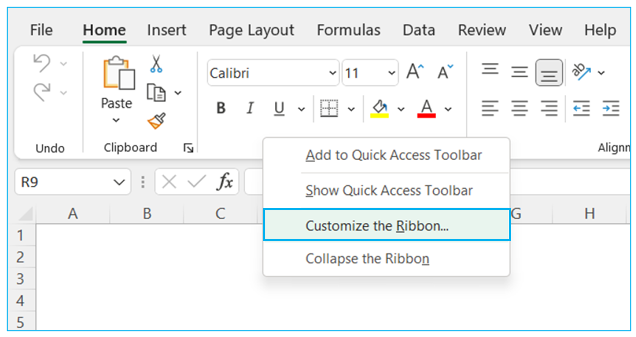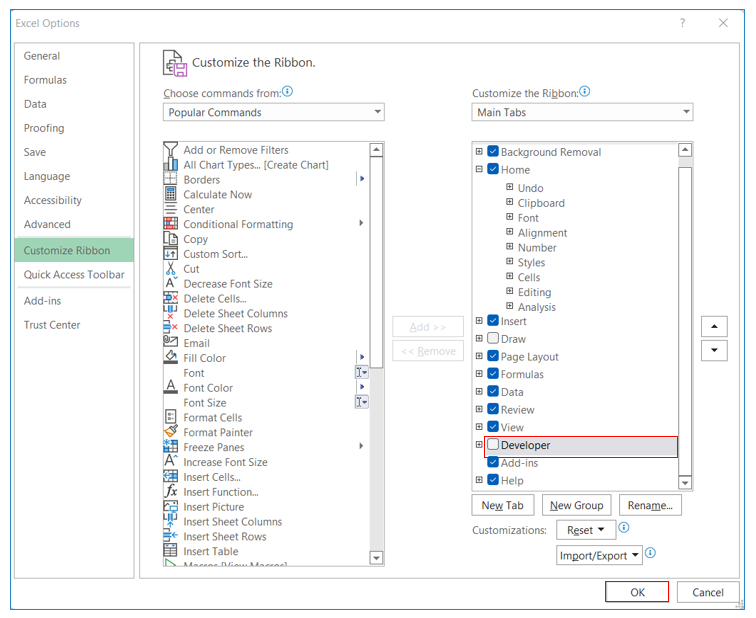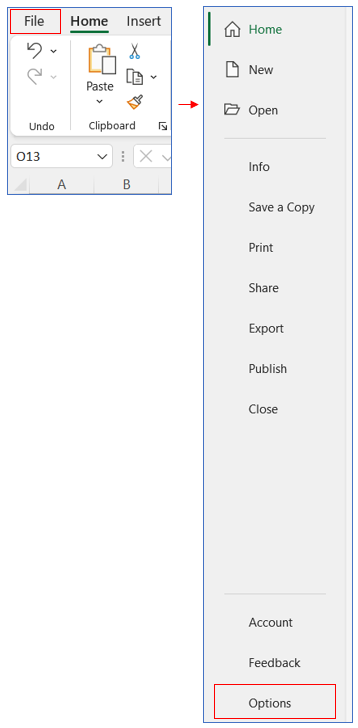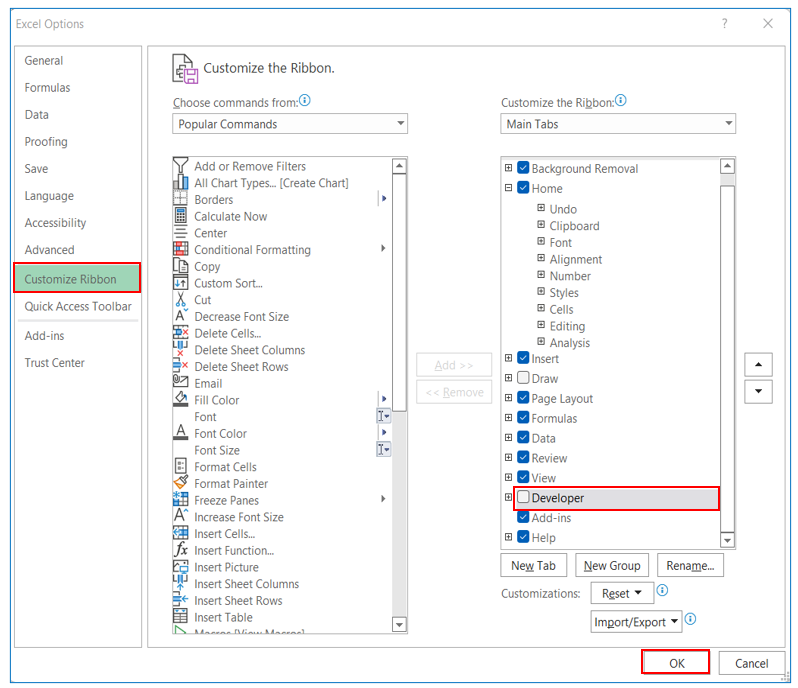The Developer tab isn’t displayed by default, but you can add it to the ribbon. There is multiple way to add Developer tab in excel.
Step-1: Right click anywhere in the Ribbon. And Click Customize the Ribbon option

Excel Options box will appear, outlined below

Step-2: Tick mark the Developer Check Box and click OK
You will see the Excel Developer Tab in the Menu Highlighted below

Alternatively, way to enable developer tab in excel.
You can bring Developer tab through the following steps:
Step-1: Select File then click More Options/Options

Excel Options box will appear, outlined below

Step-2: Tick mark the Developer Check Box and click OK
You will see the Developer Tab in the Menu highlighted below

You may be interested:
